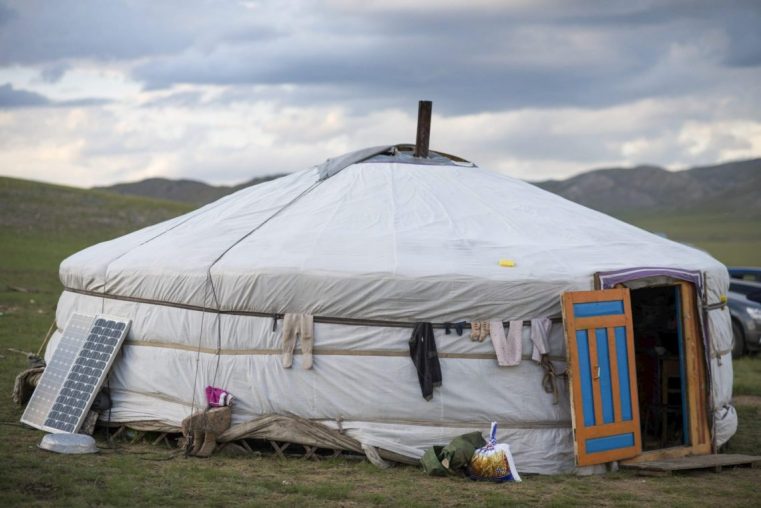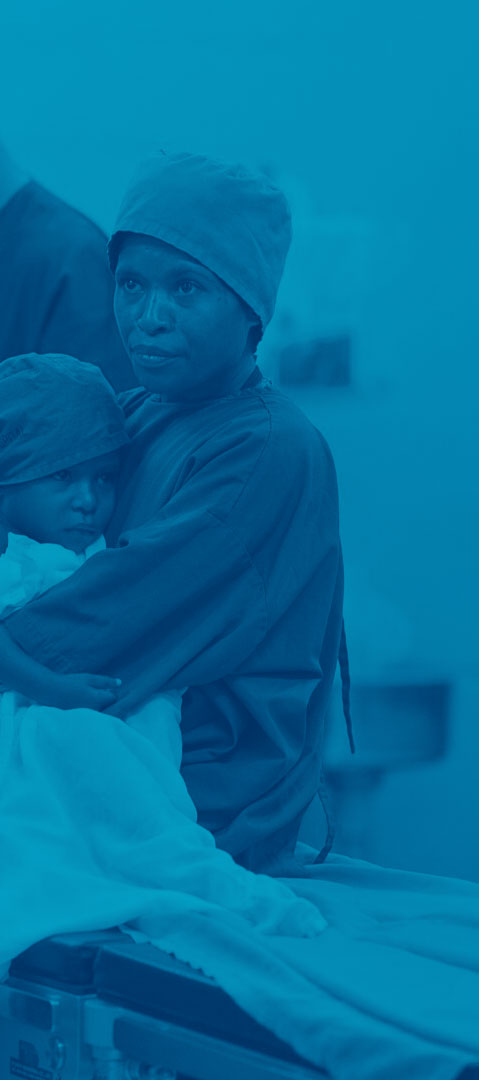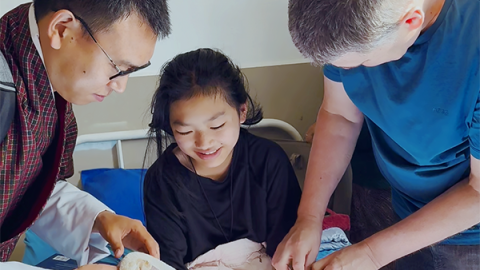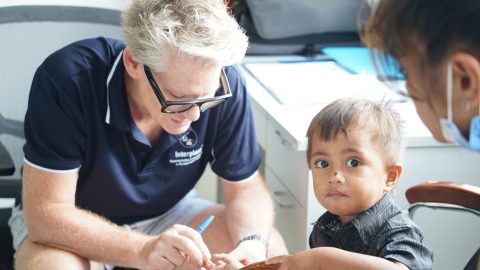
Many people in Mongolia still live nomadically, as they have done for centuries, driving their herds across vast grassland ‘steppes’ and living in gers – big ‘tents’ made from felt tarpaulins and wood. Each ger is open plan, with a small kitchen, beds along the sides, and an all-important central fireplace for cooking and heating. In this way, it nurtures up to four generations of a family members, feeding them and keeping them warm in winter when temperatures often drop below -40˚C.
Despite such life-giving properties, these fires frequently cause very bad injuries, particularly among children. For example, contact with hot liquids amounts to well over half of all injuries to children in Mongolia. This is a global problem. Burns are a leading cause of unintentional, life-threatening injuries among young children around the world.
Anaesthetist Assoc. Professor David Pescod, has treated many burn injuries like this during his 20 years travelling to Mongolia with Interplast surgical teams. This excerpt comes from a recent interview where Assoc. Prof. Pescod shares his professional experiences and emphasises the need to do more to reduce the incidence of such preventable injuries.
The burn rate in children in Mongolia is probably 1 in 3. Most of the burns occur because they are cooking on top of a closed fire, but the children are pulling down boiling water or boiling milk.
A ‘ger’ is a massive round tent which they can pack up in a day and put onto the back of their camels or their horses and move to another grazing field, but they cook in a closed fire. The fire is normally fuelled by dung because there’s no trees on the steppes, and the mothers cook in big open pots. Most of the diet is based around dairy or meat, and they boil up the milk. And then the children reach out and pull the pots down, and suffer dreadful burns, dreadful scalds. The nearest health access may be several days travel by motorbike away, and that would be to a small hospital, that may be manned by one doctor and two nurses, and then maybe another two days travel by jeep to get to a district hospital, and then several days to get to a tertiary hospital where they can treat a burn.
Dr Kirstie MacGill had trained a local surgeon there. She’d been back there twice, and he was very skilful. And the plan was, until COVID came, was to take him to Dalanzadgad, which is down south near one of the big mining towns, and have him mentor a surgeon under Kirstie’s supervision. I’d planned to train both those surgeons the following year or year after, then take those out to different spots and then train another four. Following this approach, looking at a 10 year program we’d expect to have a trained burns surgeons in every major hospital in every district in the country.
Yes. That is still the ambition, yes. And Kirstie is very ambitious to do that. And, it is easily, not easily, but it will be achievable. The Mongolian government has realised that burns is one of their major concerns. There’s finance from one of the foreign countries I think somewhere, might be United Arab Emirates. They’re providing money to build a burns hospital that’s half completed. And at that point, Interplast will be able to enter into a new hospital and provide a total service. We’ll be looking at setting up the physio, OT, surgery and anaesthesia. And also helping the hospital with how to manage a hospital infrastructure. It’s an amazing opportunity.
Whilst challenges exist due to COVID-19, Interplast are continuing to work with our partners in Mongolia on burns prevention campaigns and burns care training via online education and remote mentoring.
Programs include Emergency Management of Severe Burns provider and instructor training, Interburns Advanced Burns Care training as well as online educational programs such as webinars, modules, training videos and mentoring sessions through our Telehealth approach.
Interplast is also working to develop a National Plastic Surgery Strategy and are supporting the Mongolian Society of Anaesthetists through the development of online education resources.



